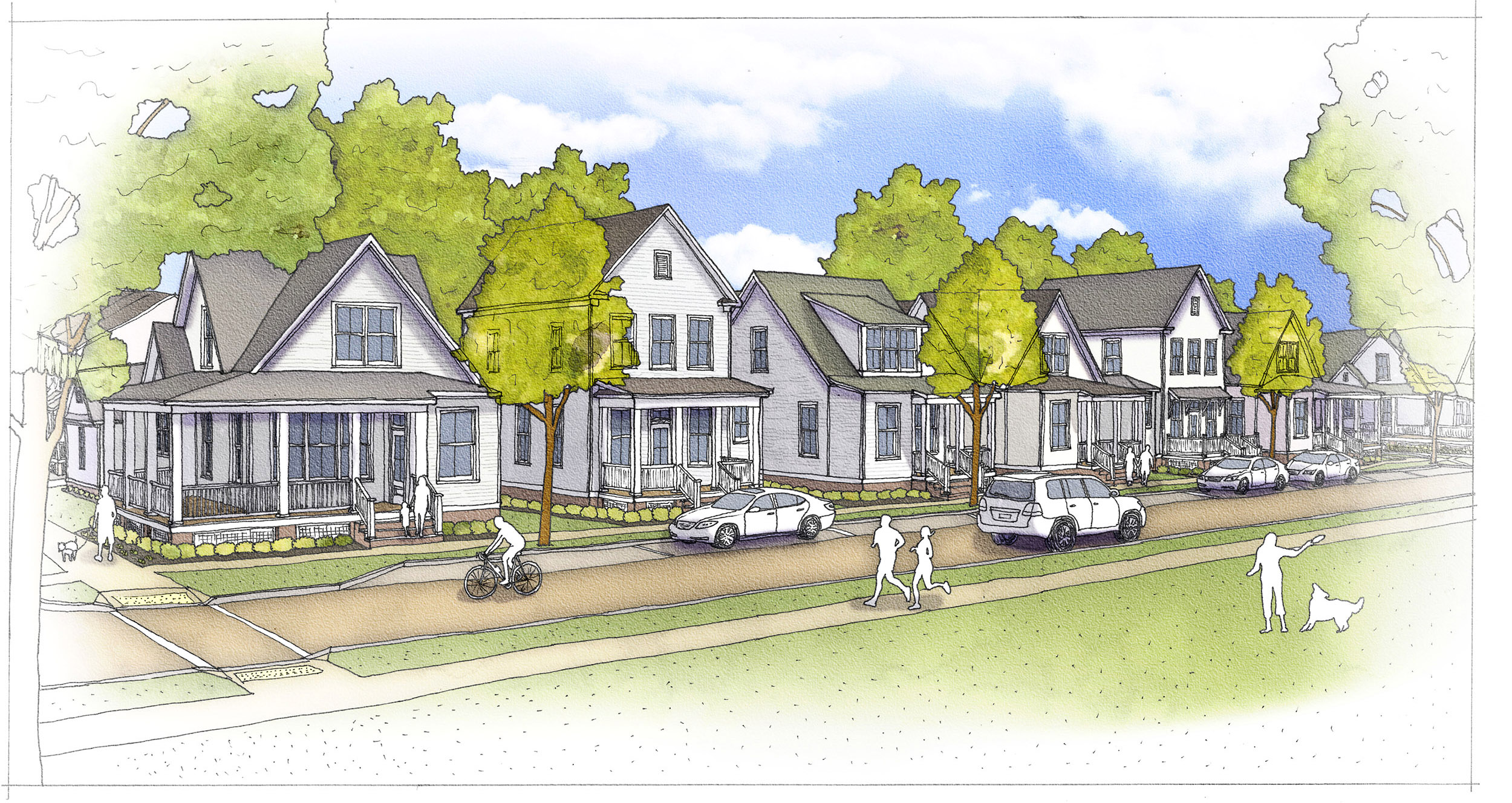The following was originally published in the February edition of Long Island Pulse Magazine. This version has been edited to reflect updated market conditions. You can read the original here.
In 2017, Long Island’s real estate market roared back to life. In the past year, an increasingly competitive housing market characterized by low inventory and depressed mortgage rates are largely responsible for fueling a residential boom in Nassau and Suffolk Counties. Now with interest rates slowly climbing, as well as the looming impacts of tax reform hanging over homeowners, will the growth continue?
Even with these factors, the momentum is likely to roll into 2018. Proximity to the economic powerhouse that is New York City is high on prospective home buyers’ wish lists, keeping Nassau County properties in steady demand. Here, the increase in median sales price was 6.2 percent, or $515,000, year-over-year in December 2017. In Suffolk, a (relatively) low cost of entry and larger lot sizes continue to lure buyers—the median sales price in Suffolk County increased 6.5 percent to $375,000 during the same period, according to Multiple Listing Service of Long Island. In both cases, higher prices in the five boroughs are pushing buyers out to the Island where prices are “more reasonable,” said Jean-Paul Commisso, managing broker with Cornerstone Real Estate Services in Smithtown.
Outside of the prevalent rate environment, the Island’s lack of inventory is the principal driver of pricing growth. “You’re seeing appreciation of properties, especially in the middle market properties priced around $300,000 and $600,000,” Commisso said. In our region’s current heated marketplace, a property listed on the weekend is likely to see a contract signing that Monday, he added. In 2017, the average listing on Long Island stayed on the market between 10 and 16 days, according to a Douglas Elliman report. In the coming months, listing time is likely to diminish as inventory levels drop further. That quick turnaround was fueled by low mortgage rates, which remained steady throughout 2017. Rates are expected to gradually rise in the next few months, but whether or not it will be enough to scare off buyers and upset the overall trends remains to be seen.
Painting the entirety of Long Island’s market with generalizations is not advisable noted Ann Conroy, president of the Long Island Division of Douglas Elliman. “People try to broad stroke the entire region but you can’t. Each sector is so vibrant.” There was a notable exception to the red-hot, single-family housing market. “One sector that hasn’t seen accelerated growth is luxury listings over $2.5 million,” Conroy added. “Luxury has been quieter than we would’ve liked it to be.” The reasons for the market softness at the top are varied. “Overall, people have been cautious. For the first time in 15 years, I’m hearing buyers give pause because of the taxes at that level,” she said, adding that taxes on luxury properties are often upward of $100,000. “People are balking at the costs. They’re concerned.”
Cost apprehensions have created a “new normal” for the region in the years since the housing market began rebuilding itself from the depths of recession. Generally, baby boomers are staying in large, suburban homes longer than previous generations who typically downsized locally or went south to Florida or North Carolina. The lack of movement for some boomers is attributed to a preference for aging in their own (longtime) home and inflated expectations of their property value in a post-recession economy. In many cases, it’s seemingly more economical for them to stay put than seek out a new home.
For others, the heightened market presents an opportunity. This is especially true on the twin forks. “On the East End, I’m seeing two different trends,” said Sheri Winter Clarry, an associate broker at the Corcoran Group. “People are jumping into the second home market, ready to pounce on homes they like,” she said. “The other trend is that people are downsizing further out East.” This demand for age-specific housing is evident in Cutchogue where a 124-unit, 55-and-older development is gaining traction after decades of delayed starts. The 46-acre Harvest Pointe project (which Clarry is representing) is expected to have units for sale by the summer of 2018 at a price point just shy of the luxury sector: $685,000.
Although it’s typically part of its own real estate ecosystem, the East End isn’t much above regional market trends. While changing demographics and buyer expectations have the power to alter the market for multifamily complexes in Nassau and Suffolk counties, new developments catered toward millennials and seniors are poised to be especially hot in 2018. “Units in senior projects are flying off the shelves,” Conroy said. An increasing number of millennial buyers are reshaping the expectations of suburban communities as a whole. “They like restaurants, cultural centers and like to be part of the neighborhood.”
These types of all-inclusive complexes may be harder to come by, as the number of large, vacant parcels (where new housing stock is typically constructed) are dwindling. When compounded by rising land prices, the construction industry won’t easily be able to meet demand. The region’s lack of new construction could drive up costs going forward. “It’s hard to get anything done on Long Island building-wise, and in turn it can be difficult for buyers,” Commisso said. The timeline of Harvest Pointe, originally named Heritage at Cutchogue, encapsulates Commisso’s insights. It was first proposed in the 1980s, but didn’t gain steam until this past summer after the developer and the Town of Southold reached a long awaited legal settlement over zoning.
Squabbles aside, downtown revitalizations are likely to be a continued trend for filling the requests of buyers across multiple demographics in a region inherently restricted by limited buildable land. Realtors are watching closely as the single-family market continues its upward swing across Nassau and Suffolk counties. “The general housing market is really strong,” Clarry said. “Between the people who want a weekend place out East or looking to downsize, they’re likely to continue jumping in throughout 2018.”
The new year will probably see home buyers focusing on Long Island’s greatest traditional strengths: solid public education and proximity to New York City. “Buyers will be looking for quality of school districts, as well as convenience for doing business in and around New York City,” Commisso noted, expressing that most are looking for single-family homes that strike the balance between pricing, district and accessibility.
Richard Murdocco is an award-winning columnist and adjunct professor in Stony Brook University’s public policy graduate program. He regularly writes and speaks about Long Island’s real estate development issues. More of his views can be found on thefoggiestidea.org or follow him on Twitter @thefoggiestidea.









I only hope that the new tax laws regarding property tax deductions makes a positive impact on the continuing over building of Nassau and Suffolk, and by that I mean, my desire would be to discontinue the destruction of Nassau and Suffolk by hungry, overly ambitious, insensitve developers who care for nothing other than lining their pockets. Maybe when the next tax law come into effect, homeowners will no longer see the benefits of being over taxed by corrupt politicians who can’t seem to do their job within their yearly fiscal budgets and continually raise property taxes.
Once this is taken out of the mix, I would venture to say that home ownership will take a bit of dive, and some of these mass developments will sit empty for some time.
Long Island has been saturated with housing on all market levels and there is nothing left to it. In Western Nassau there is the Ritz Carlton development, which, on a few acres of land has placed hundreds of luxury units and destroyed any visual beauty whatsoever along with a monolithic office building directly on New Hyde Park Road and Horace Harding Expressway (service road). I’m sorry, but I don’t believe the statistics of all this desperation for housing – I think people are leaving and there is evidence to support my claims as well. It is disgusting what has been done. And as I always say, no one thinks of the environment impact to the delicate water supply of Nassau and Suffolk. So on a few acres of land, where there used to be 3 or 4 houses you now have hundreds of units, all creating garbage, flushing toilets, using cars, polluting the environment 100-fold – and we’re always told to be environmental conscious? What a joke! Other than the wealthy and the subsidized poor, I truly doubt any millenials or middle-class families or seniors on fixed incomes are clamoring to stay on Long Island. That’s just not the reality. It has become unaffordable for most.
Now more than ever is it necessary to have that Suffolk-Nassau regional plan in place. If no “planner” is willing to invest in infrastructure or start revisiting the way people naturally grow towns with mixed-use/high density at town center and less-populated hinterlands maybe we can balance the environmental services provided by groundwater and forested land instead of paving and sewering our sprawl. We are headed down an expensive and degenerative path if we can’t handle ourselves for the future of the next Long Islanders.